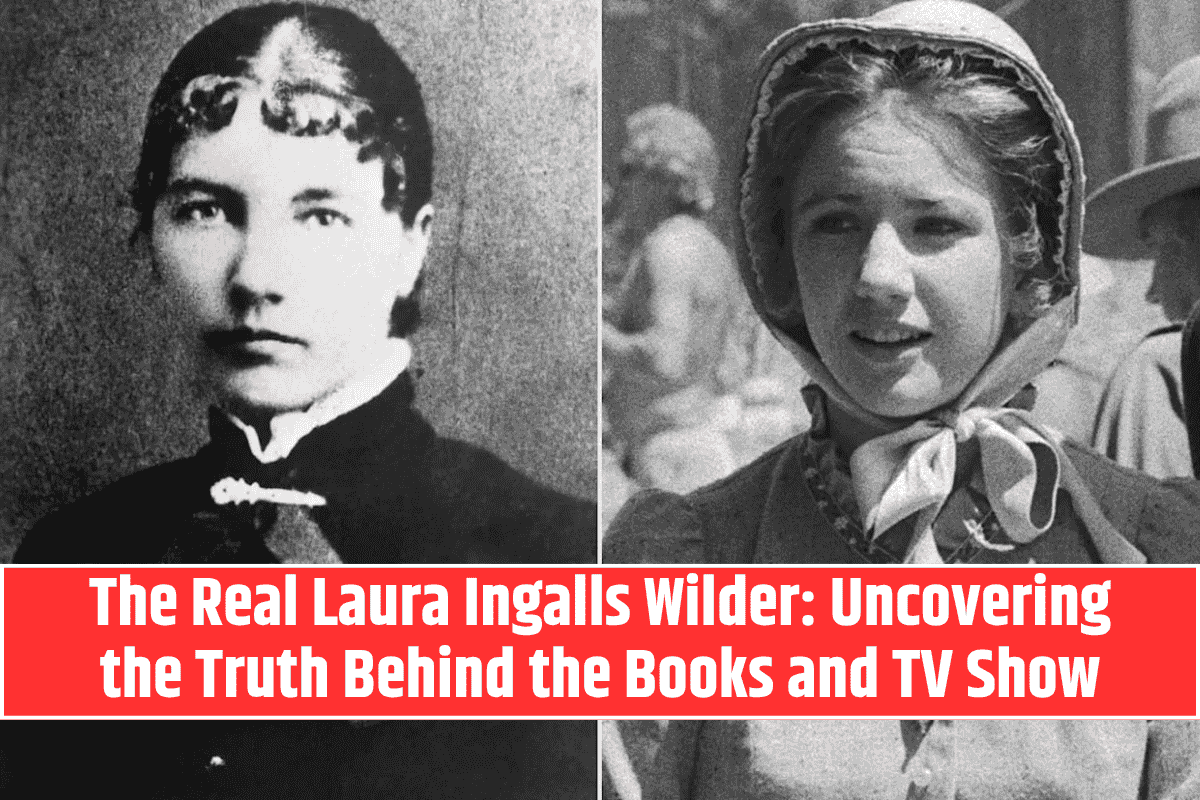Laura Ingalls Wilder became famous as the author of the Little House on the Prairie book series, which inspired the hit 1974 TV show. Fans know her as a strong and adventurous young girl who grew up in a pioneer family, but the real Laura’s life was far more complex.
While the books and TV show were based on her life, both took creative liberties that often made the story seem simpler than it was. Let’s take a deeper look at the truth behind Laura Ingalls Wilder’s life, the books, and the beloved TV show.
Laura Ingalls Wilder: The Real Life Behind the Books
Laura Ingalls Wilder was born in 1867 and spent much of her childhood moving across the American Midwest with her family. These experiences became the foundation for her Little House books, but they were not an exact retelling of her life.
The Little House series consists of nine books, starting with Little House in the Big Woods in 1932 and ending with The First Four Years, which was published posthumously in 1971. Though the books were inspired by real events, they also included many fictional elements and left out much of the hardship and struggle that Laura’s family went through.
For example, in Little House in the Big Woods, Laura’s family is depicted living in the woods when she was five. In reality, she was only three at the time. Author Caroline Fraser, who wrote Prairie Fires: The American Dreams of Laura Ingalls Wilder, explains that while the books are largely accurate, Laura left out many uncomfortable truths.
The TV series, in particular, portrayed the Ingalls family in an idealized light, making Charles Ingalls (Laura’s father) seem like a perfect dad, while in reality, he struggled with debts and faced a more challenging life.
Fraser suggests that the real story of Laura’s life is far more complicated and, in some ways, more remarkable than what is told in the books.
How the Books Came to Life
Laura Ingalls Wilder began her writing career in her 40s, initially writing columns for local newspapers in Mansfield, Missouri, where she lived with her husband, Almanzo Wilder. She was encouraged by her daughter, Rose Wilder Lane, a successful freelance writer, who played a key role in helping her mother shape the Little House books.
The first manuscript Laura wrote, Pioneer Girl, was much harsher and more direct about the struggles of frontier life. Rose, however, helped transform it into the family-friendly stories that became the Little House series. While Rose assisted in shaping the books, there’s ongoing debate about how much of the books were written by Laura and how much was written by Rose.
Interestingly, although both Laura and Rose presented the books as true stories, later in life, Rose defended them as entirely accurate, going so far as to threaten legal action against those who suggested they were fictionalized.
This push for the books’ truthfulness helped maintain the image of Laura as a simple, hardworking woman writing from her memories.
The Little House on the Prairie TV Show: Fiction vs. Reality
The Little House on the Prairie TV series, which ran from 1974 to 1983, took several creative liberties with both the real Laura Ingalls Wilder’s life and the stories in the books.
The show’s setting and characters were based mostly on events from the book On the Banks of Plum Creek, which focuses on the Ingalls family’s time living near Walnut Grove, Minnesota. However, in real life, the Ingalls family moved around a lot, and the TV show didn’t reflect that.
For example, the show’s setting largely took place in Walnut Grove, while in reality, the family spent time in other places, like De Smet, South Dakota. The show also introduced characters that were either entirely fictional or composite versions of real people Laura knew.
One such character is Nellie Oleson, played by Alison Arngrim, who was a blend of several girls Laura went to school with.
The show’s portrayal of Laura’s relationship with Almanzo Wilder also differs from the real story. In the series, Laura and Almanzo marry early on, while in the books, their marriage happens after several years of courting, as described in These Happy Golden Years.
Life After Writing
After Almanzo Wilder’s death in 1949, Laura continued to live on their farm in Missouri. She passed away in early 1957, just a few days before her 90th birthday. Following her death, her daughter, Rose, continued to play a key role in managing Laura’s legacy.
The Little House books were later adapted into a TV series, and while it wasn’t entirely accurate to Laura’s life or the books, it became a beloved part of American television history.
The Legacy of Laura Ingalls Wilder
Today, several locations connected to Laura’s life remain as historical sites, including the Laura Ingalls Wilder House and Museum in Missouri, and the Laura Ingalls Wilder Museum in Walnut Grove, Minnesota.
There’s also a Laura Ingalls Wilder Memorial Society in De Smet, South Dakota. These sites keep her memory alive, and her books continue to be a significant part of American literature.
Recently, a new Little House on the Prairie series is being developed for Netflix, and fans are curious to see how closely it will follow the books and Laura’s real life. The new series will likely continue to inspire new generations of viewers to learn about the pioneer spirit, even as it adds its own twists to the legendary story.
Laura Ingalls Wilder’s life and work are far more complicated than the charming stories in her books and the TV series. While the Little House series continues to captivate readers and viewers around the world, understanding the real Laura Ingalls Wilder reveals a woman who was far more complex, with a much richer life story than the one portrayed in her books and TV adaptations.
As we celebrate her legacy, it’s important to remember both the facts and the fiction that made her story one of the most beloved in American history.












